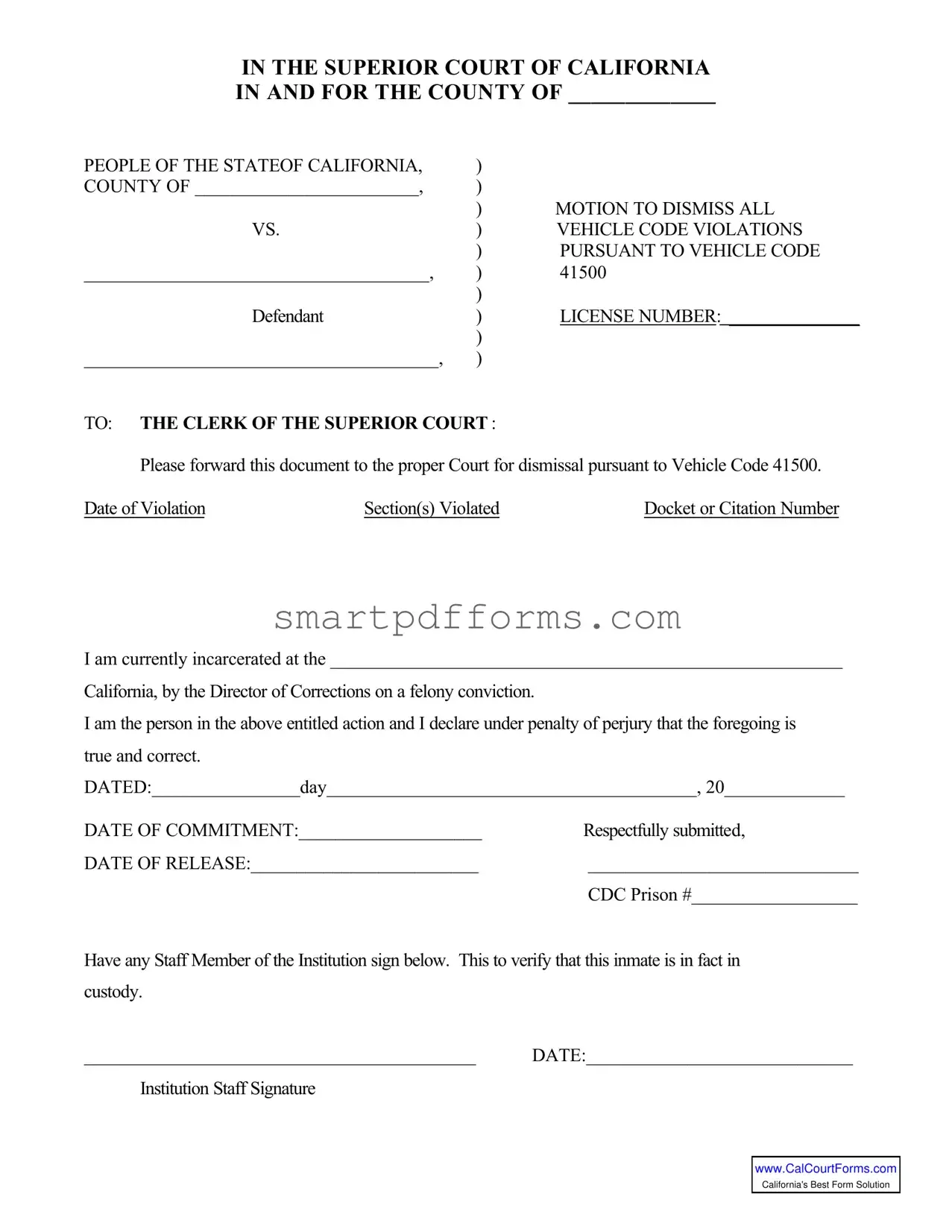Blank 41500 PDF Template
The Form 41500 serves as a legal document utilized within the Superior Court of California, designed specifically for individuals seeking to dismiss all Vehicle Code violations due to incarceration on a felony conviction. This form requires detailed information including the date of violation, section(s) violated, docket or citation number, as well as the defendant's incarceration details. It emphasizes the legal procedure enabling those currently serving a sentence to request the dismissal of related vehicle code offenses, streamlining the process for both the court system and the incarcerated individuals.
For those eligible, completing the Form 41500 can be a crucial step in managing legal troubles and ensuring one's rights are protected during incarceration. To proceed with filing this form and potentially lifting the burden of vehicle code violations, consider clicking the button below.

